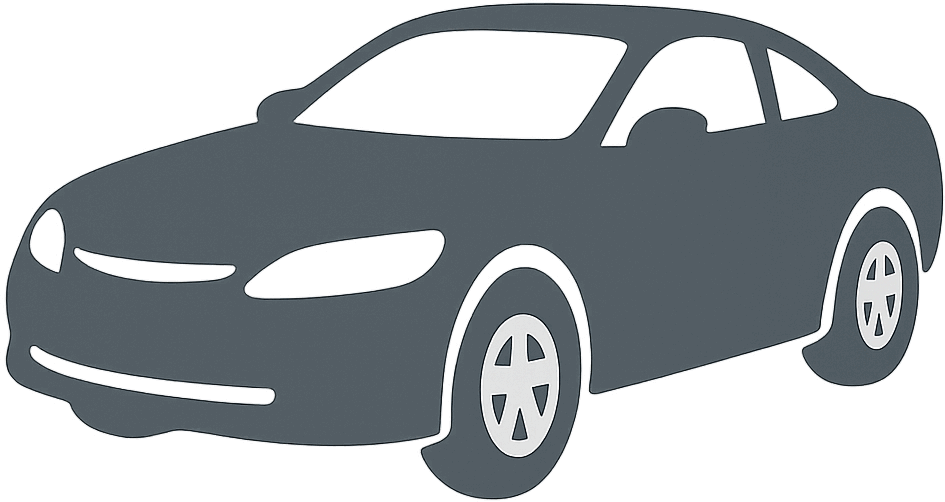 1970 Lancia Fulvia Coupe Dimensions, Size & Specs
1970 Lancia Fulvia Coupe Dimensions, Size & Specs
The 1970 Lancia Fulvia Coupe represents a classic example of Italian automotive design and engineering from the early 1970s. As a coupe model, it features a sleek and compact two-door body style that blends style with performance. Although precise dimensions for the 1970 model vary slightly by source, the Fulvia Coupe generally measures approximately 3.9 meters (around 154 inches) in length, offering a compact footprint ideal for nimble urban and spirited driving. The width is typically around 1.5 meters (about 59 inches), contributing to its narrow stance and agile handling characteristics. Its height is close to 1.34 meters (approximately 53 inches), which complements the low-slung aerodynamic profile typical of coupes of this era, enhancing stability and road presence.
Under the hood, the Lancia Fulvia Coupe was well-known for sporting innovative engineering for its time. It commonly featured front-wheel drive, which was relatively progressive for the period, and a range of small but peppy engines, including V4 configurations that offered a fun-to-drive balance of power and efficiency. The lightweight construction of the Fulvia Coupe further improved handling and responsiveness, making it prized among enthusiasts for its driving dynamics.
The 1970 Lancia Fulvia Coupe combines classic Italian styling with compact dimensions, offering a uniquely attractive package for collectors and fans of vintage European coupes. Its size makes it manageable in crowded city environments while retaining a distinct sporty character on open roads. Overall, the Fulvia Coupe from 1970 stands out as a timeless model that blends heritage, design, and driving pleasure within a modestly sized coupe format.
Discover the standout features that make the 1970 Lancia Fulvia Coupe a leader in its class
Have a question? Please check our knowledgebase first.
The 1970 Lancia Fulvia Coupe is a compact and elegantly designed vehicle with a length of approximately 3,930 mm (154.7 inches), a width of around 1,550 mm (61.0 inches), and a height of about 1,320 mm (51.97 inches). These dimensions reflect its classic coupe proportions, offering a sporty yet practical stance suitable for both city and motor touring use. The compact size also contributes to its nimble handling and ease of maneuverability on narrow roads and tight corners, which are characteristic traits appreciated by enthusiasts of this classic Italian car.
The wheelbase of the 1970 Lancia Fulvia Coupe measures approximately 2,350 mm (92.5 inches), providing a balanced platform for handling and ride comfort. A relatively short wheelbase in this size of coupe enhances agility and quick directional changes, making it especially adept in corners which is ideal for its rally heritage. However, it is also long enough to maintain stability at higher speeds, ensuring a composed driving experience. The engineering behind the Fulvia, including its well-tuned suspension setup, takes full advantage of the wheelbase length to provide impressive road manners for a car of its era.
The Lancia Fulvia Coupe from 1970 typically weighs around 930 kg (2,050 lbs), which is relatively light compared to many of its contemporaries. This low curb weight contributes significantly to the car's agile performance — it enhances acceleration, braking, and fuel efficiency while supporting the car’s nimble handling characteristics. The lighter weight, combined with its sophisticated front-engine, front-wheel-drive layout, made the Fulvia a firm favorite in motorsports, particularly in rallying where quick changes of direction and quick responses are critical.
Yes, the 1970 Lancia Fulvia Coupe generally fits comfortably within a standard residential garage. Given its length of around 3,930 mm (154.7 inches) and width of approximately 1,550 mm (61.0 inches), it is smaller than the average modern vehicle and usually requires less space. A standard residential garage typically accommodates cars up to 5,000 mm (196 inches) in length and around 2,400 mm (94.5 inches) in width, meaning the Fulvia Coupe has ample clearance on all sides, making parking and storing the vehicle at home convenient for enthusiasts and collectors alike.
The Lancia Fulvia Coupe, being a compact sports coupe, offers seating for four passengers with moderate interior space. The cabin emphasizes driver engagement and style rather than spaciousness. Headroom and legroom are sufficient for front passengers, but rear seats are best suited for shorter trips or smaller occupants due to the compact nature of the coupe design. The cockpit is designed with a driver-focused layout, and while it may feel cozy compared to modern cars, it reflects the design priorities of early 1970s European coupes which balance style, performance, and utility.
The 1970 Lancia Fulvia Coupe features a sleek, wedge-shaped design that was advanced for its time, contributing positively to its aerodynamic performance. Its relatively low height of about 1,320 mm (51.97 inches) and narrow width of just 1,550 mm (61.0 inches) reduce air resistance, improving both fuel economy and high-speed stability. The sharp lines and compact profile also help minimize drag. This aerodynamic efficiency was significant during its production era, especially for rally and road use, since it allowed the Fulvia to achieve remarkable handling and speed relative to other cars of similar size.
The 1970 Lancia Fulvia Coupe reflects a refinement over its predecessor, particularly the earlier Fulvia Berlina models. While the Berlina was more of a sedan configuration, the Coupe version showcases a more compact and sportier body with a slightly shortened length and reduced height, contributing to its athletic appearance and improved agility. The Coupe’s distinct 2-door layout reduces overall weight, and its width is generally similar but presented in a more aerodynamic form. These dimensional adjustments supported Lancia’s goal of creating a competitive sports coupe that combined everyday usability with rally-winning performance.
Compared to other compact European sports coupes of the early 1970s, like the Alfa Romeo GT Junior, Fiat 124 Coupe, or BMW 2002 Coupe, the Lancia Fulvia Coupe is on the smaller and lighter side. Its length of approximately 3,930 mm (154.7 inches) and its narrow width of 1,550 mm (61.0 inches) make it more compact than many competitors that tended to measure closer to 4,200 mm (165 inches) or more in length. This smaller size, along with its lower weight, gave the Fulvia an edge in handling and agility, particularly in rally contexts, although it might feel more confined inside compared to slightly larger rivals.
The 1970 Lancia Fulvia Coupe offers a modest luggage capacity typical of sports coupes of its era, generally around 200-220 liters (7.1-7.8 cubic feet). While this space is enough for a weekend getaway or light travel with soft bags, it is not designed for bulky luggage or large family trips. The rear seatbacks do not fold down to increase cargo space, which might limit the practicality for some users. However, for enthusiasts who prioritize driving excitement and classic design, the trunk space is considered adequate for most personal uses, including touring and casual road trips.
The compact and lightweight design of the 1970 Lancia Fulvia Coupe makes it highly suitable for modern urban environments where space can be limited. Its small footprint, with a length of 3,930 mm (154.7 inches) and narrow width of 1,550 mm (61.0 inches), facilitates easier parking and maneuvering in tight city streets compared to larger modern vehicles. However, drivers should be aware that certain features, like modern conveniences and safety technologies, are not present in this classic car. Despite that, its size and dynamic capabilities still make the Fulvia a practical vintage choice for urban driving and commuting.
